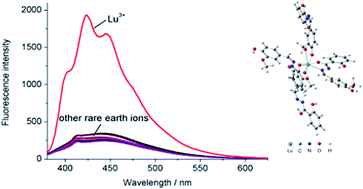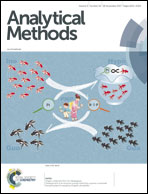A highly selective Schiff base fluorescent chemosensor for Lu3+†
Abstract
A Schiff base derivative, N-(3-methoxy-4-hydroxybenzylidene)salicyloylhydrazone (L), shows high selectivity to Lu3+ not only in abiotic systems but also in living cells with fluorescence. The presence of PVP can increase the fluorescence intensity. The fluorescence enhancement is presumably due to a combinational effect of intramolecular charge transfer (ICT) and excited-state intra/intermolecular proton transfer (ESPT) during the chelation of L to Lu3+ in a 2 : 1 complex mode.



 Please wait while we load your content...
Please wait while we load your content...